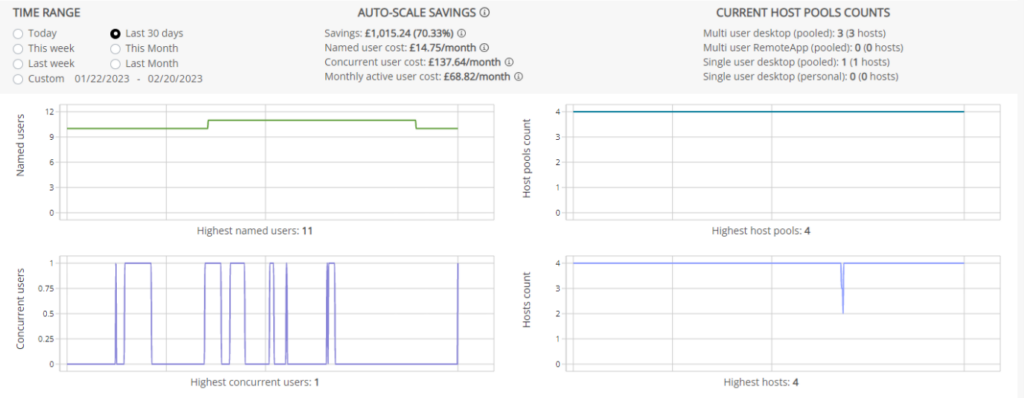
In today’s hybrid workplace, organisations are increasingly looking to harness the power of the cloud and technologies such as Azure Virtual Desktop (AVD). However, this can be daunting if you have had little or no experience with this technology in the past. In this blog, Endpoint Management and Security Consultant Richard Johnston explains how you can manage AVD in the modern workplace more easily.
Challenges of the modern workplace for employers
It’s hard to escape the meteoric rise of the ‘modern workplace’. It’s talked about at every opportunity in our industry – but is often seen as simply enabling users to work remotely. However, a modern workplace is actually defined as an organisation that recognises digital collaboration, technology and tools as essential to the future way of working. There is no singular tool or technology that can deliver a modern workplace or offer digital transformation in its entirety.
Many businesses were challenged with the sudden shift to a modern workplace when the COVID-19 pandemic hit, forcing millions to work from home. However, while many of us might now be used to the ‘new normal’ post-pandemic, some of those early tech challenges are still felt today. These include keeping up with rapidly evolving technology, ensuring data is secured and compliant, and knowing how best to inform and train employees about these new ways of working.
The key to overcoming these challenges is to be agile, responsive and adaptable to the ever-changing digital landscape. Organisations that can embrace digital transformation while keeping a firm hand on security, engagement and productivity are the ones who will best navigate the challenges of the modern workplace.
How can virtual desktop infrastructure help?
Virtual desktops are nothing new within the workplace. From Remote Desktop Services (RDS) to Citrix Workspace, many IT users have experienced some sort of virtualised Windows environment before.
Virtual desktop infrastructure (VDI) is popular as it helps alleviate most of the challenges of enterprise end-user device management, even in this age of digital transformation and the modern workplace.
VDI offers centralised data storage, management and control. Typically, all your virtual desktop infrastructure resides in the same location, meaning you are not left wondering where your data and infrastructure reside, and what is being done to them. If all your users require a new application, simply install it across your always-on virtualised desktops – and that’s that.
With the unique flexibility and scalability of VDI, organisations can meet the demands of the typical developments in a business, such as mergers, acquisitions and huge spikes or dips in headcount. The flexibility of enabling your end users to work in the same way, no matter whether they are at home, in the office or on the go, is a huge advantage.
By adopting VDI, you can provide a secure, flexible, productive and standardised working environment for your people.
What is Microsoft Azure Virtual Desktop?
Microsoft Azure Virtual Desktop (AVD) is a desktop and application service (DaaS) housed in Microsoft’s very own hybrid cloud offering, Microsoft Azure. It enables organisations to deploy, manage and maintain virtualised workloads without the need for procuring complex infrastructure on-premises.
AVD is not the only desktop virtualisation solution available from Microsoft. Built upon AVD, Windows 365 provides a software as a service (SaaS) alternative to native AVD. You can find out more about the difference between AVD and Windows 365 in this blog from Dan Coleby, our Modern Workplace Product Director.
At Content+Cloud, we see all manner of organisations adopting AVD as their preferred VDI solution due to its simplified management, scalability and cost-saving benefits. With support for both fully cloud (Azure AD) deployments, as well as hybrid (Active Directory) instances, AVD helps meet the needs of organisations on any point in their modern workplace journey.
AVD offers the ability to provide users with a shared Windows 10 or Windows 11 desktop experience (multi-session) or it can be deployed in a way that offers users their own dedicated virtual desktop (single session). Golden images can be created to deploy a base build of applications and services to end users, helping to achieve scalability and standardisation.
Integration into group policy, Azure Active Directory, Microsoft Intune and Defender for Endpoint technologies helps AVD fit nicely alongside already existing Microsoft 365 tenants.
How to manage AVD at scale for the modern workplace
Scaling AVD can present several challenges. As the demand for virtual desktops and applications increases, you need to be able to scale the AVD environment quickly and efficiently to meet business-critical needs. Similarly, as demand decreases over certain time periods, for example, the holiday season, it is important that your costs of running the resources are optimised.
One of the main challenges of scaling AVD session hosts is ensuring that the underlying infrastructure can support the increased demand. This may involve upgrading hardware, adding additional capacity to the network, and optimising the configuration of the virtual desktop environment. Azure also has quotas for each customer in each region, meaning limits are placed on resources.
Another challenge is managing and maintaining the virtual desktop environment as it scales out and in. As the number of virtual desktops and applications increases, it becomes more difficult to manage and maintain each different environment. Tools and processes that can automate the management and maintenance of the environment to ensure that it remains secure and up to date are important.
How you can improve the AVD experience with Nerdio Manager for Enterprise
There is a tool that can help you overcome these hurdles. Nerdio Manager for Enterprise is a powerful solution that can help businesses meet the challenges of scaling AVD and improve the overall management of the virtual desktop environment.
One of the key benefits of Nerdio Manager for Enterprise is its ability to automate the deployment and management of virtual desktops and applications. This reduces the time taken to deploy AVD, update images, patch session hosts and perform other management tasks. Nerdio allows speedy provisioning of virtual desktops and applications. The console is extremely user friendly, with useful graphs and reports readily available.

Screenshot of the Nerdio dashboard. Source: Content+Cloud Nerdio environment.
At Content+Cloud, we have leveraged Nerdio to deliver significant value to many of our customers, with some saving up to 75% on a monthly basis due to the intelligent autoscaling capabilities of Nerdio compared to the native management tools available in AVD.
Nerdio is licensed on a month-by-month basis, and you are only billed for users that use AVD in a particular month, so there is no long-term commitment to use the tool. However, we ultimately find that organisations that try Nerdio rarely stop using it as the benefits are so compelling.
Nerdio also provides a powerful set of tools for us as the service provider to manage our customer’s AVD environments. The tool includes comprehensive image management, enabling us to update images across multiple host pools in minutes rather than hours.
The accurate monitoring and reporting capabilities of Nerdio give us unrivalled insight into what is happening across your AVD environment, meaning that we can take action through our pro-active managed service to address any performance or other issues before they become a problem to the users.
We can even use Nerdio to manage Windows 365 environments as well as AVD, making hybrid environments easy to manage.


